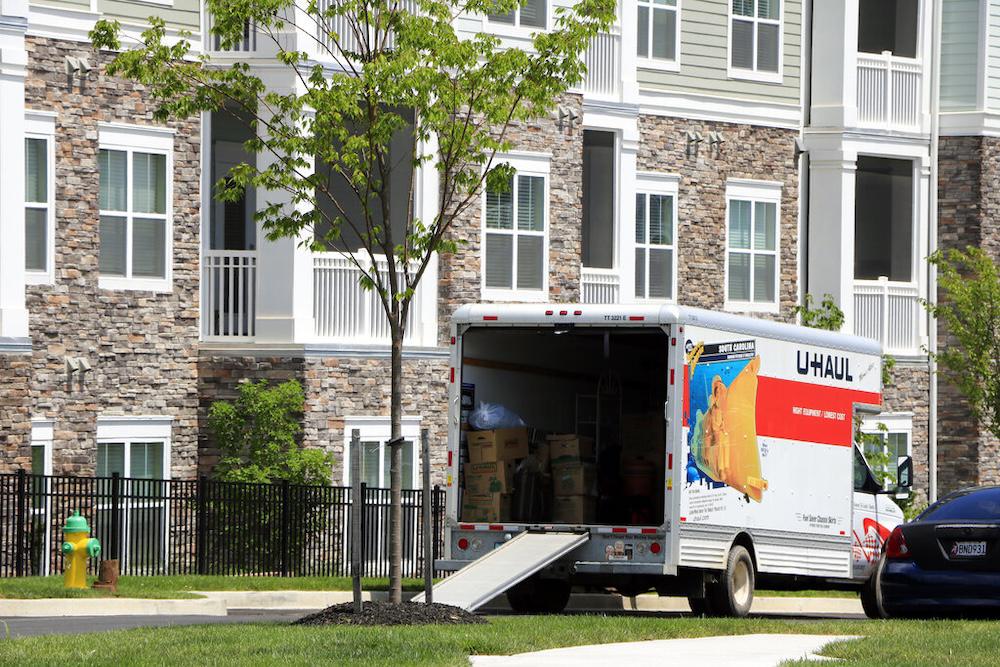The Department of Government Efficiency once captained by Elon Musk has ripped through the federal workforce, carelessly and callously firing federal workers with a Silicon Valley-esque “move fast and break things” mindset. As Congress prepares to codify these layoffs into law, many of those employees are asking a question they never thought they’d have to answer: “What do I do next?”
One solution, to leave Washington and search for new jobs elsewhere, is a potentially calamitous outcome for the nation’s capital. Yet a flight of fired feds could be a very real possibility.
Christopher House, a professor of economics at the University of Michigan, co-authored a Brookings Institute report published in March titled “Should I Stay or Should I Go? The Response of Labor Migration to Economic Shocks.”
“It’s fairly well-known at this point that gross labor migration rates in the U.S. have been falling pretty steadily since the early ’80s,” House told the Prospect. But when House and his colleagues analyzed how net migration rates respond to major economic shifts, they found that overall, though Americans may be moving less, they are just as likely to move to a place experiencing a hiring boom—or away from a place experiencing cratering employment—as they always have been.
As employment craters in the federal government, Washington’s major industry, the city is uniquely vulnerable to labor migration. For one, there may not be enough private-sector work to go around. “Anecdotally, there’s been conversation about a saturated job market,” said Brittany Holder, deputy director of communications for the American Federation of Government Employees, the union that represents over 800,000 federal workers. Holder notes that after multiple rounds of layoffs, thousands of federal workers, contractors, and other highly skilled employees “are likely applying for the same jobs.”
If they’re unable to find work in their fields, federal employees may be more likely to move than other American workers. Federal workers are highly educated: about 30 percent hold a bachelor’s degree and more than 20 percent hold advanced degrees and work in niche areas. According to House, Americans with a college degree “are more eager or willing or maybe more able to move” compared to workers with less education.
Already there are signs that the District may be on the cusp of a federal-worker exodus. Bright MLS, a Mid-Atlantic real-estate marketplace, reports that in May active listings of available properties on the market increased 41.6 percent compared to last year, a surge that coincided with the federal layoffs. An early May Washington Post-Schar School poll found that 23 percent of D.C. residents were “seriously considering” moving out of the city, including a stunning 45 percent of residents who reported a household member being laid off by the federal government or a federal contractor.
Even if far fewer District residents eventually leave the city, the scale of the DOGE layoffs could result in a significant decline in population. From January through May, federal payrolls shrunk by 59,000, while an additional 130,000 employees lost their jobs but are technically furloughed with pay until either September or until the “Big Beautiful Bill” passes—whichever comes first. More layoffs could follow depending on the outcomes of two emergency cases on federal workers that are pending before the Supreme Court.
The gutting of the federal workforce unfolds amid an already grim economic outlook for Washington, according to Yesim Sayin, executive director of the D.C. Policy Center, a local think tank. The COVID-19 pandemic produced a structural imbalance in the District’s budget caused by the dual pressures of increased spending on health care and social services for the neediest Washingtonians and the collapse of commercial property taxes.
Related: Grim Times for Washingtonians
From 2019 to 2024, the Center found the District’s revenue increased by more than 10 percent but overall government expenditures grew by 35 percent. Now, the District is pivoting to austerity.
“The city has to balance its budgets over a four-year financial plan.” Sayin told the Prospect. “The goal [of the most recent budget] was to reduce the gap between the recurring spending and recurring expenditures to zero by 2029, the last year of the financial plan. That’s a very dramatic change, even though the city has four years to get there.”
“I think safety nets are really, really, really important,” Sayin said. “But you cannot pay for safety nets if you don’t have economic growth.”
When Sayin thinks about how the city can move forward, she thinks about the people, including the highly skilled federal workers who have long called Washington home. “The District has always grown, but by acquisition,” she said. “What do we have in our soil, in our water, in our air that will actually lead to an industry or industries that are scalable [to] employ a wide variety of people? We really have never had to sit down and think about ‘what does organic growth look like in D.C.?’”
Washington does not have natural resources or major industries to fall back on, Sayin said, and the one resource it does have is imperiled. “We have the talent,” she said. “But the talent is picking up their bags and leaving.”
In his June 2025 letter certifying the city’s revenue estimates for the next four fiscal years (which are unchanged from previous projections) Glen Lee, the city’s chief financial officer, wrote that, “If the administration’s proposed workforce reductions are upheld by the administration’s proposed workforce reductions are upheld by the Courts or are sustained by Congress in the Fiscal Year 2026 federal budget, the economic impact on the District will be substantial. In either case, layoffs of federal employees could happen more quickly and be on a larger scale than currently expected.”
Charlie McGill is an editorial intern at The American Prospect.
